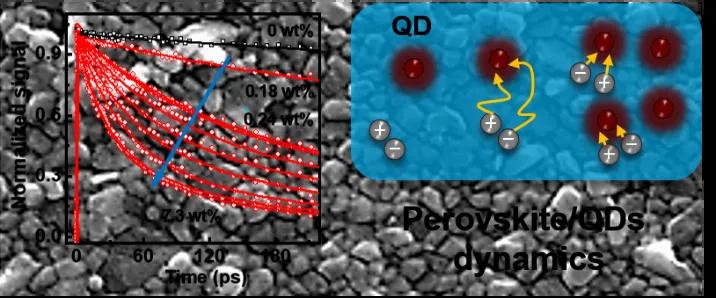Text
Hybrid organic–inorganic lead iodide halide perovskite thin polycrystalline films emerged as a cheap, easy prepared and effective light harvesting and emitting material. Just over the past few years, extensive studies on perovskite-based solar cells increased their efficiency from 4% to 22.7%. Currently, in contrast to the originally studied bulk neat perovskites, increasing attention is being attracted by advanced perovskite structures such as perovskites with embedded QDs or lower dimension structures. These perovskite hybrids have potential to enhance the performance of related optoelectronic devices and overcome some of the perovskite disadvantages (low thermal stability, water degradation, etc.). The proper understanding of ultrafast charge carrier events in these complex structures is paramount for further improvement of their applicability. In our research, we have focused on such processes in MAPbI3/PbS@CdS QDs and Any/MAPbI3 2D perovskites using ultrafast time-resolved transient visible-NIR absorption and terahertz spectroscopies. These complementary pump-and-probe techniques allowed us to monitor dynamics of charge carrier population (100 fs – 1.5 ns) together with photoconductivity of the hybrids (1 ps – 9 ns) in the wide temporal range. In the case of perovskite with QDs we have deciphered charge recombination and transfer processes of photoexcited charges and proved significant influence of hybrid interface and QDs surface structure. Research realized on 2D perovskites showed influence of spacer structure on stability of initially generated excitons.
